Rob Bignell's Blog, page 385
January 11, 2013
Why writers need to carry business cards
We’ve all 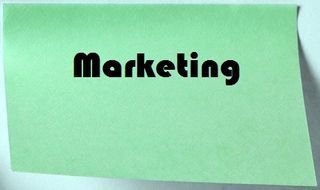 experienced this before: You want to get hold of someone but don’t know how. You could look them up online and probably find their email and phone number, of course…if only you could remember their name. Every time you try typing in something that seems close, you come up nada.
experienced this before: You want to get hold of someone but don’t know how. You could look them up online and probably find their email and phone number, of course…if only you could remember their name. Every time you try typing in something that seems close, you come up nada.
It’s in such a situation that a low-tech solution would solve your problem: the tried-and-true business card, kept in your trusty wallet.
Whenever you meet someone who might be interested in any way in your book, give them your business card. Besides ensuring that the other person remembers your name and has your contact information, a business card provides you with credibility and validation. After all, if you weren’t a legitimate author with a book to be reckoned with, why would you have gone to all the trouble of having business cards made up?
In short, business cards create connections for you.
What to put on your business card? Every card should contain your:
n Name as it can be found online or on a book cover
n Title/position, which might be “Author of (your book’s title)”
n Email address
n Website address
n Other contact info (such as phone, fax, snail mail)
Anything more than this – except maybe a recognizable logo for your books if you’ve published a series of them – just clutters up the card.
That’s only one side of the business card, though. On the flip side, you may want to include an “advertisement” for yourself. Commercial writers, for example, include a list of services on the back of their cards. Fiction writers might include a brief synopsis of their current title.
Most business cards boast a fairly bland appearance and are printed on cream-colored paper. That’s okay, though, as the card’s purpose is to provide your name and contact information. To make yourself stand out, though, consider having the tone of your card’s lettering the book’s genre or subject (such as a gothic-styled typeface if you’ve written a book about vampires) but don’t be tacky.
Who should you give your business card to? Anyone you connect with who’s interested in buying your book, literary agents who might want to represent your book, publishers who might want to print your book, designers who might want to illustrate your next book’s cover, reporters who might want to interview you about your book, etc. Writing conferences are great places for handing out such cards but carry them with you wherever you go – you never know when you night run into someone who shows an interest in your book.
Need an editor? Having your book, business document or academic paper proofread or edited before submitting it can prove invaluable. In an economic climate where you face heavy competition, your writing needs a second eye to give you the edge. I can provide that second eye.
January 10, 2013
Do you need extra services a P.O.D. house offers?
As you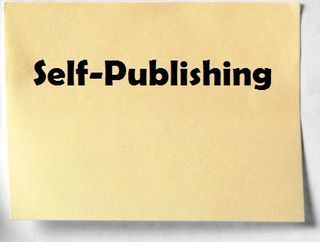 go through the self-publishing process, you might find the array of tasks before you overwhelming – design a book cover, get a photo of yourself, proofread the manuscript, format the text, upload the text, pen a cover blurb, write then send out press releases, etc. etc. etc. – and you’re a writer, not an artist, marketing professional, or book publisher. Given this, you’re probably relieved to see self-publishing houses offer such services.
go through the self-publishing process, you might find the array of tasks before you overwhelming – design a book cover, get a photo of yourself, proofread the manuscript, format the text, upload the text, pen a cover blurb, write then send out press releases, etc. etc. etc. – and you’re a writer, not an artist, marketing professional, or book publisher. Given this, you’re probably relieved to see self-publishing houses offer such services.
But which of those services do you really need? And are they a good deal?
You probably need some of the services that self-publishing houses offer. Unless you have experience working with publications beyond writing, you simply may not have the expertise to put together a professional-looking book. The good news is that even if lacking such experience, you still can do it on your own by reading guidebooks, such as this one, so long as you are willing to make the time commitment.
Still, you have to know when you’re out of your league. For example, I’ve designed some of my books’ cover and contracted designers to design the rest. While I can do basic design work, the more sophisticated the artwork, the less capable I was of pulling it off. For those complex projects, I searched out design experts with the necessary skills and software.
But needing some of the services that a self-publishing house offers doesn’t mean you need to purchase them from a self-publishing house. Such houses typically charge more than what freelancers would (Full disclosure here: I offer such editing and self-publishing services as a freelancer.). In addition, many self-publishing houses don’t offer the most personal service; after all, they have hundreds of clients on any given day who need work done, so often templates that don’t best meet your needs are used and little contact with you beyond generic-sounding emails occurs. Further, you probably aren’t getting the best expertise when going with a self-publishing house. Their employees tend to be straight out of college, and while they may know their self-publishing house’s systems really well, ask yourself who you want designing your book cover – someone with several years of experience or someone who started a few months ago and uses a template?
The downside of not going with a self-publishing houses’ suite of prepackaged services is that you now become a general contractor. Finding freelancers requires you to shop around. First you’ll need to identify some freelancers. A simple Google search or going to websites where you can bid for freelancers’ services (such as Elance or Guru.com) is a good way to start. Next, when soliciting bids, you need to clearly state for freelancers what you want them to accomplish for you. Be specific when explaining yourself. Consider asking freelancers to answer a few questions about themselves – such as years of experience, seeing a portfolio, how they charge for services, turnaround time, and references – to help you make an informed decision. Finally, while how every author arrives at a final decision of who to contract always is a personal matter, consider balancing the elements of cost, experience, and meeting your specific needs. In short, don’t make a decision solely based on who’s the lowest bidder. Proven experience almost always trumps cost if you want a quality product.
Need an editor? Having your book, business document or academic paper proofread or edited before submitting it can prove invaluable. In an economic climate where you face heavy competition, your writing needs a second eye to give you the edge. I can provide that second eye.
January 9, 2013
Don’t lose sleep over this confusing comma rule
One  punctuation matter that might keep you up at night is whether to place commas when they appear mid-sentence. Well, you can quote me on this: Commas appear inside quotation marks, according to the book “Use the Right Word,” and other sources.
punctuation matter that might keep you up at night is whether to place commas when they appear mid-sentence. Well, you can quote me on this: Commas appear inside quotation marks, according to the book “Use the Right Word,” and other sources.
The British, however, place the comma outside of the quotation mark. But they also drive down the left side of the road.
This American peculiarity soon may be put to rest, though. Many websites place the comma outside of the quotation mark so that the comma doesn’t become part of a link (The title of that book, after all, probably is linked to its Amazon.com page.); having a comma as part of the link looks a little untidy, after all. In fact, in my print books, I place the comma inside but on my websites the comma always goes outside.
Given this, don’t be surprised if in a quarter century or so we revise this rule for print. For the moment, though, tuck that comma inside the quotation mark and sleep tight.
Need an editor? Having your book, business document or academic paper proofread or edited before submitting it can prove invaluable. In an economic climate where you face heavy competition, your writing needs a second eye to give you the edge. I can provide that second eye.
January 8, 2013
How to make your writing show rather than tell
You 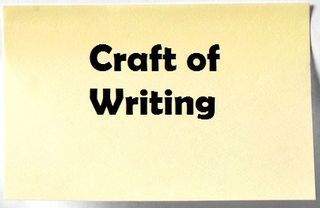 don’t have to write for very long before hearing the cry of “Show don’t tell!” or “Too much exposition!” The advice is given for good reason. Exposition (or telling) typically fails to be either evocative or engaging.
don’t have to write for very long before hearing the cry of “Show don’t tell!” or “Too much exposition!” The advice is given for good reason. Exposition (or telling) typically fails to be either evocative or engaging.
So how do you fix exposition? How do you make your writing show rather than tell?
Begin by identifying when you’re telling rather than showing. A simple guideline is that telling states a fact. In fiction, however, this fact prevents the reader from deducting what the actual fact is. Because of this, telling limits the reader's participation in the story. Consider this example of telling:
We pulled into the parking lot of The Pink Pony. I was more than a little nervous.
“I was a little more than nervous” is a perfect example of telling rather than showing. It states a direct face – the narrator is nervous – rather than allow the reader to deduct that she is nervous.
To resolve this, you want to evoke a mental image that allows the reader to conclude the narrator is nervous. You might instead write:
We pulled into the parking lot of The Pink Pony. My hand was shaking as I grabbed the door handle.
“My hand was shaking as I grabbed the door handle” doesn’t directly state that the narrator is nervous, but the reader easily can deduce this.
Revising to show rather than tell often marks the steepest part of the climb for writers scaling their draft. Sometimes no obvious evocative mental image quickly comes to mind. Still, the struggle to show rather than tell is worth the mental sweat. A grateful reader is waiting on the other side.
Need an editor? Having your book, business document or academic paper proofread or edited before submitting it can prove invaluable. In an economic climate where you face heavy competition, your writing needs a second eye to give you the edge. I can provide that second eye.
Related articles
 Why you want reviews written about your book
Why you want reviews written about your book Editor's poetry collection now on Kindle
Editor's poetry collection now on Kindle Select a viewpoint that gives you flexibility
Select a viewpoint that gives you flexibility Write a winning blurb for your book's back cover
Write a winning blurb for your book's back cover Avoid exposition (Show, don't tell!)
Avoid exposition (Show, don't tell!)
January 7, 2013
Conflict: The heart of every story
When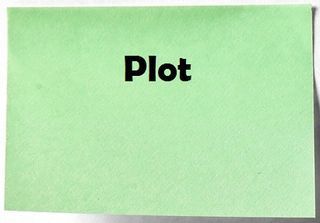 telling a story, you’ve got to have conflict in it. If there’s no conflict, you have a wooden story that starts nowhere, leads nowhere and ends nowhere. As E.M. Forster noted, “’The king died, then the queen died’ is a plot. ‘The king died, then the queen died of grief’ is a story.”
telling a story, you’ve got to have conflict in it. If there’s no conflict, you have a wooden story that starts nowhere, leads nowhere and ends nowhere. As E.M. Forster noted, “’The king died, then the queen died’ is a plot. ‘The king died, then the queen died of grief’ is a story.”
Forster’s quotation is apt because a good plot is about at least one character under adversity. Conflict typically arises from the characters’ perceptions, needs and wants. As each character has an urgent personal agenda, your plot really is a synthesis of its individual characters’ efforts to achieve their agendas.
Consider the “Star Trek: The Original Series” episode “Errand of Mercy,” in which we are introduced to the Klingons. The agenda of our hero, Captain Kirk, is to persuade the Organians to join the Federation so that the world may be used as a base of operations against the Klingons. The agenda of our villain, Klingon Commander Kor, is to occupy Organia so that the planet may be used as a base of operations against the Federation. The Organian Council of Elders’ goal is to stay neutral.
As these conflicting agendas intersect, each character faces adversity. For Kirk, the Organians aren’t receptive to his idea, then finds himself in the middle of an occupation army and ultimately is captured by Kor. For Kor, an ammunition dump is blown up (by Kirk) and then the Organians are uncooperative when Kirk escapes his cell. For the Organians, they first feel the pressure of Kirk and Kor and then watch both sides become increasingly violent toward one another on their home turf.
There are five primary types of conflict that your characters can face:
n Man vs. nature - When the forces of nature, such as storms, deserts and volcanoes, that hinder a character from achieving his objective
n Man vs. man - When two individuals struggle against one another to achieve their objectives, such as Kirk and Kor
n Man vs. society - When a character or small group takes on the mores and values of their culture or its political institutions
n Man vs. God(s) - When an individual or a small group fight God or the gods
n Man vs. himself - When a character has an internal struggle because of conflicting desires, wants and needs
When developing conflict in your story, follow these guidelines:
n Maximize conflict by pit two forces against one another – This either can involve opposites facing off (as with Kirk and Kor) or involve an internal struggle.
n Every scene should present the main character with a problem - If this doesn’t happen, there probably isn’t much point to the scene.
n Conflict should allow the character an opportunity to change the course of events - Adversity alone rarely is enough to carry a story, though it may help create reader sympathy for your character.
Need an editor? Having your book, business document or academic paper proofread or edited before submitting it can prove invaluable. In an economic climate where you face heavy competition, your writing needs a second eye to give you the edge. I can provide that second eye.
Related articles
 Select a viewpoint that gives you flexibility
Select a viewpoint that gives you flexibility
January 6, 2013
My poetry book now on Nook, other e-readers
Love Letters to Sophie’s Mom, 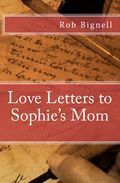 my collection of poetry published in September, is now available on Nook, iBooks and a variety of other eReaders – just in time for Valentine’s Day. Passionate and evocative, Love Letters to Sophie’s Mom traces a relationship from the first dance of love at a coffee shop to its tragic demise as mental illness overtakes the narrator’s beloved. Inspired by a diverse array of writings, including the verse of Pablo Neruda, Dylan Thomas, and Bob Dylan, the collection’s 34 poems touch upon themes including nature, Southern California, and the Northwoods. Previously, the digital version of the book was sold exclusively on Kindle. You now can purchase it on Apple iPad/iBooks, Nook, Sony Reader, Kobo, and most e-reading apps including Stanza, Aldiko, Adobe Digital Editions and other ereaders here.
my collection of poetry published in September, is now available on Nook, iBooks and a variety of other eReaders – just in time for Valentine’s Day. Passionate and evocative, Love Letters to Sophie’s Mom traces a relationship from the first dance of love at a coffee shop to its tragic demise as mental illness overtakes the narrator’s beloved. Inspired by a diverse array of writings, including the verse of Pablo Neruda, Dylan Thomas, and Bob Dylan, the collection’s 34 poems touch upon themes including nature, Southern California, and the Northwoods. Previously, the digital version of the book was sold exclusively on Kindle. You now can purchase it on Apple iPad/iBooks, Nook, Sony Reader, Kobo, and most e-reading apps including Stanza, Aldiko, Adobe Digital Editions and other ereaders here.
Need an editor? Having your book, business document or academic paper proofread or edited before submitting it can prove invaluable. In an economic climate where you face heavy competition, your writing needs a second eye to give you the edge. I can provide that second eye.
Related articles
 Editor's poetry collection now on Kindle
Editor's poetry collection now on Kindle
January 5, 2013
Five great quotations about book critics
“A critic can only review the book he has read, not the one which the writer wrote.” – Mignon McLaughlin
“The good critic is he who narrates the adventures of his soul among masterpieces.” – Anatole France
“Criticism should not be querulous and wasting, all knife and root-puller, but guiding, instructive, inspiring.” – Ralph Waldo Emerson
“Asking a working writer what he thinks about critics is like asking a lamppost how it feels about dogs.” – Christopher Hampton
“Any reviewer who expresses rage and loathing for a novel is preposterous. He or she is like a person who has put on full armor and attacked a hot fudge sundae.” – Kurt Vonnegut
Need an editor? Having your book, business document or academic paper proofread or edited before submitting it can prove invaluable. In an economic climate where you face heavy competition, your writing needs a second eye to give you the edge. I can provide that second eye.
Related articles
 Promote book with Goodreads author's page
Promote book with Goodreads author's page Five great quotations about novel writing
Five great quotations about novel writing
January 4, 2013
Some guidelines for reviewing a book
Once 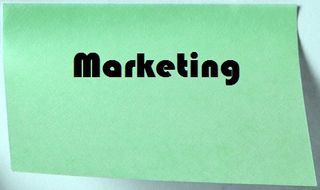 you’ve asked someone to write a review for your book, you might be peppered with a few questions: How long should it be? What do you want me say? When do you need it by?
you’ve asked someone to write a review for your book, you might be peppered with a few questions: How long should it be? What do you want me say? When do you need it by?
Consider handing them a copy of the instructions below, particularly if they’re writing a customer review that appears on Amazon.com or Barnes & Noble’s websites or writing a recommendation or Goodreads:
n Length – Any review longer than 250 words is too long if appearing online. Most readers won’t wade through text that is any longer. If a reviewer does write that many words, have them break it up into at least a couple of paragraphs as a large block of text can be hard on the eyes.
n Structure – Write a paragraph like your eighth-grade language arts teacher taught you: Topic sentence; three supporting points; an example for each supporting point; conclusion sentence. It’s that simple.
n Content – Focus on the book’s content. That means no profanity, no defamation of the author or other people, and no book ordering information. The first two are in bad taste while the last already is given on the page and so wastes the reader’s time. By the way, don’t give a plot spoiler either.
n Headline – Readers often select which reviews they’ll look at based on the headline. So make it catchy. Use a subject-verb-direct object format as in ‘Twin Identity’ takes reader on tear-jerking romp (‘Twin Identity’ is the subject, takes is the verb, and reader on tear-jerking romp is the direct object.). Avoid using articles (a, an, the) and conjunctions (and, but, or).
n Typos – Don’t write the review in the little box where it is posted on the website. Instead, use a word processing program and run the review through spell check. Then paste it into the box and upload.
n Rules – Be aware of the website’s rules for writing and posting reviews (certain fields must be entered, such as giving the book a rating); others have a minimum age for who can write a review.
A final note: Don’t tell bloggers or mainstream media how to write your review. They already know and more importantly, they have house guidelines – both for writing style and professional ethics – that limit what they can and cannot do.
Need an editor? Having your book, business document or academic paper proofread or edited before submitting it can prove invaluable. In an economic climate where you face heavy competition, your writing needs a second eye to give you the edge. I can provide that second eye.
January 3, 2013
Always review proof your book before okaying it
One time while working as a magazine editor, my designer dropped a “proof” – a copy of how the publication would look when printed – on my desk. Too busy to even complete all the other tasks on my to-do list, I decided to cut corners and skip reviewing the proof. After all, I’d already looked at everything in it a dozen times and had confidence in my staff. There couldn’t be anything wrong with it, right? As the day went on and more tasks found their way onto my to-do list, I overheard the publisher telling another manager in the hallway, “Never leave anything to chance.”
time while working as a magazine editor, my designer dropped a “proof” – a copy of how the publication would look when printed – on my desk. Too busy to even complete all the other tasks on my to-do list, I decided to cut corners and skip reviewing the proof. After all, I’d already looked at everything in it a dozen times and had confidence in my staff. There couldn’t be anything wrong with it, right? As the day went on and more tasks found their way onto my to-do list, I overheard the publisher telling another manager in the hallway, “Never leave anything to chance.”
With those five words, my editor’s instincts kicked in. I pushed aside the staff member’s annual review, told my executive assistant to hold the phone calls, and decided the freelance writer awaiting my notes on her first draft could wait one more day. The proof needed my review.
And good thing I made that choice. An embarrassing misspelling somehow had snuck its way onto the table of contents.
After you’ve uploaded a formatted version of your book’s text and its cover, you’ll be asked to review a proof of your book. No matter how busy you are, no matter how much of a rush you are to get your book for sale, no matter how many times you’ve already looked at it, heed these five words: “Never leave anything to chance.” Take one last look at your book.
Once you approve your proof, the book is going to print or be made available for download. If an error is in there, people will buy your book with that mistake for all to see for all posterity.
You’re likely to find errors in your book, too. Looking at a paper version in your hands or an electronic version on a Kindle or Nook is a lot different than reading the text in Word or a pdf on your computer screen. Think of it this way: holding the paper version in your hands is like taking a real car on the street rather than sitting in a simulator as learning to drive.
When reviewing your proof, look for the following:
n Everything should be there – Are you missing information on the title page? Maybe the price got left off the cover. Is the last paragraph of a chapter mysteriously gone?
n Alignments – Make sure the chapter titles and page margins actually are where they’re supposed to be.
n Page numbers – Also known as folios, make sure your pages are correctly numbered. Check that numbering against the table of contents, if you have one.
n Chapter titles – Ensure they’re spelled correctly. A reader might miss a typo in the text but is certain to see any mistakes that appear in large or boldface type.
Fortunately, if a mistake does slip past, you can reload your book. With paperbacks, this can mean a a couple of days that your book is not available for sale while your printer gets the correct files set for printing. Still, it’s better to not sell a book full of typos then one with them – if you do the latter, your book might be flagged for being of low quality (and removed from sales until you fix the problem) or a reader might not recommend your book – or even write a bad review of it, adversely affecting your book sales.
Need an editor? Having your book, business document or academic paper proofread or edited before submitting it can prove invaluable. In an economic climate where you face heavy competition, your writing needs a second eye to give you the edge. I can provide that second eye.
January 2, 2013
When to use affect vs. effect
Don’t  let these two commonly confused words negatively affect your writing.
let these two commonly confused words negatively affect your writing.
Affect is a verb meaning to “to influence” “to impact”: The layoffs affect about a third of the company’s employees.
Effect is a noun meaning “the consequences of”: The effect of the layoffs was lower company morale.
Hopefully the effect of this little tip will be correct usage!
Need an editor? Having your book, business document or academic paper proofread or edited before submitting it can prove invaluable. In an economic climate where you face heavy competition, your writing needs a second eye to give you the edge. I can provide that second eye.
Related articles
 Get it right: Its vs. it's
Get it right: Its vs. it's Nothing to joke about: Blonde vs. blond
Nothing to joke about: Blonde vs. blond Improve writing's texture by avoiding repetition
Improve writing's texture by avoiding repetition



